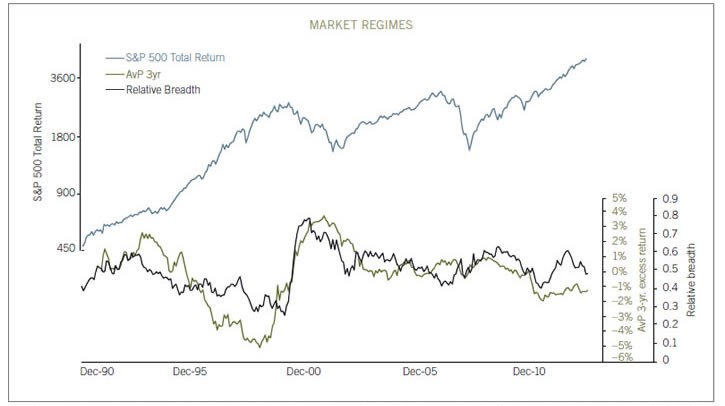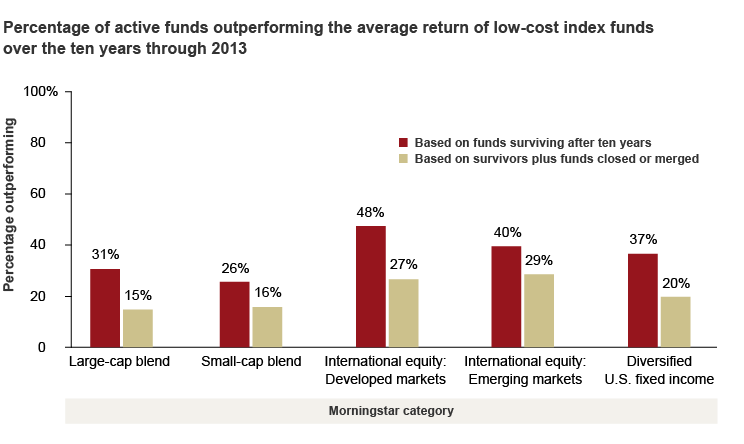Active vs passive investing which is right for your charity Your Money
Post on: 16 Март, 2015 No Comment

Active vs passive investing: which is right for your charity?
What do we mean by active investing?
Professional investment managers are responsible for creating and managing portfolios of investments, and then buying or selling them with a view to making gains and minimising losses. As professional managers their expertise is expected to help them outperform the returns of a specific benchmark (such as the FTSE All Share Index), or when compared against a ‘peer group’ of similarly managed portfolios.
Perhaps the single best feature of an active investment strategy is that it responds to changing market conditions. If the fund manager believes that a particular company, investment sector or asset class will do well or poorly, they can reposition their portfolio to benefit from their insight into the market. This gives them the advantage over their competitors to deliver greater returns.
Criticism of active funds has centred on the accusation that the average fund manager fails to beat his benchmark, and therefore is doing too little to justify his fees. But citing the ‘average’ fund manager is unhelpful as you can’t choose to buy into that; the objective when selecting an active fund is to distinguish between good and bad. Good fund managers are demonstrably able to outperform their respective benchmarks even after their fees are taken into account, sometimes substantially so. Passive investments on the other hand, offer no opportunity for such outperformance.
What is passive investing?
With passive funds there’s no good or bad, as such. Unlike active investments, where fund managers choose which investments to buy or sell, passive funds simply replicate the returns of a specific index and hold on to those investments through thick and thin. With no active fund management involved, and no professional investment manager taking portfolio decisions, the fees charged for a passive investment tend to be less. That doesn’t necessarily make them cheap just cheaper.
The key selling point for passive funds, apart from their lower costs, is that they aim to replicate the returns of the relevant index. So, if you buy an exchange traded fund (ETF) that replicates the performance of the FTSE 100 for example, then you can be confident that your investment will deliver returns roughly in line with the index, on the upside as well as the downside (minus the charges you pay for the investment itself).
Arguments for and against
So is it sensible to compare returns from active managers to their passive counterparts? Yes, but only up to a point.
Although passive funds come in many different guises, they tend to share one key characteristic: the replication of constituents within a predetermined index. And this is part of the problem when it comes to making comparisons. Indices tend to be artificial constructs and don’t always offer the best way to buy into the fortunes of individual companies and sectors. For example, FTSE 100 ETFs are popular with investors, but very few active fund managers would be willing to construct a portfolio based on companies solely within the FTSE 100. For one thing, there’s too little diversification: it’s a market-weighted index that is largely skewed towards a handful of large oil and gas companies. In fact, most UK equity fund managers prefer to invest across the entire UK spectrum, including small- and medium-sized companies, where there’s a better chance that their stock selection skills will uncover undervalued companies.
So let’s look at the performance of an index, the FTSE All Share, and an active peer group, the IMA UK All Companies sector. It’s safe to assume that the funds within this sector are all investing in the same universe of companies broadly represented by the FTSE All Share. Over five years the FTSE has risen 9.45%. Over the same period the IMA UK All Companies sector average has increased just 3.7%.
However, 30% of managers in this sector outperformed the FTSE All Share, and of those almost half were able to deliver returns more than twice that offered by the benchmark. So the rewards are there for those able to identify the winners from the losers. UK-focused passive funds, on the other hand, have all returned less than the FTSE All Share and, dependent on the fees they charge, some have underperformed by as much as 30%.
Where ETFs really come into their own is in providing quick, easy and low-cost access to markets. They are also useful for more specialist areas such as commodities. However, ETFs force the investor to buy the index and whatever is held within it. The sheer volume of ETF-driven activity offers plenty of opportunities for active managers to exploit.

Given that there are advantages and disadvantages for both, what’s a reasonable investment approach for a charity to take? Should the lower cost associated with passive investments override the potential benefits to be had from taking the active approach? Or can a charity assemble a collection of actively managed ‘winners’ that will give them the best potential returns? The answer, thankfully, is that there is some middle ground to be had.
A multi-manager is responsible for selecting a portfolio of underlying fund managers, based not only on past performance but also rigorous analysis and ongoing portfolio monitoring. It’s their job to assemble a portfolio of ‘winners’ and they make sure that the funds they invest in are capable of providing a consistent level of performance over time. Those that don’t are replaced.
But another important feature of the multi-manager approach is that it is free to include passive investments as well. The CAF Managed Portfolio Service, for example, managed and operated by Octopus Investments, uses a multi-manager approach that encompasses both active and passive investments.
It starts off with passives as the core of the portfolios, and will only invest in active fund managers where the team believes those managers will outperform the passive alternatives. It looks for managers with experience, investment insight and good stock selection skills that give them the potential to deliver consistent outperformance over time, taking into account the current market and economic conditions. This approach allows the multi-manager team to keep fund administration and transaction costs low while delivering the potential for outperformance. It also ensures that the portfolio has access to as broad a pool of investments and markets as possible.
The active and passive debate will continue to gather headlines and column inches within trade press and investment sections of newspapers. But a sensible investment approach for charities would be one that includes both; appreciating that they each have their benefits and that when put together within a well-managed investment portfolio, they are capable of providing cost-effective, consistent returns over the longer time.
Where can I find more information?
If you’re interested in finding out more about active and passive investments, please email info@vunaniprivateclients.co.za .














